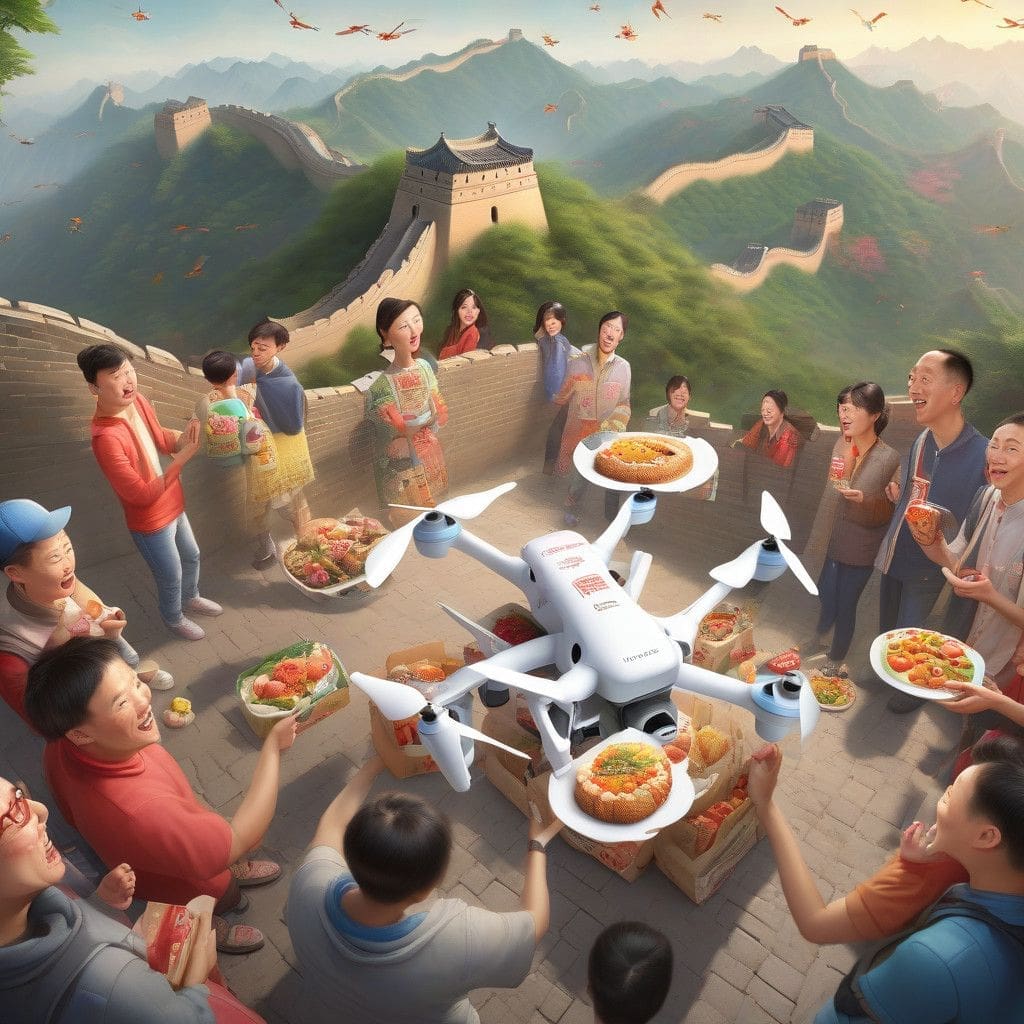In a groundbreaking move for both tourism and technology, Meituan, a prominent Chinese delivery service, has launched a drone delivery system at one of the world’s most iconic landmarks, the Great Wall of China. This innovation offers visitors an unprecedented level of convenience and transforms the way they experience this historic location.
Imagine standing at a remote section of the Great Wall, surrounded by stunning views and rich history. Traditionally, accessing refreshments required a trek to a nearby vendor, often taking up to fifty minutes. However, with Meituan’s new service, the journey from a nearby hotel rooftop to a watchtower now takes a mere five minutes. Drones, capable of carrying loads up to 2.3 kilograms, swiftly transport food and beverages, enabling tourists to savor their meals without interrupting their exploration.
Operating between 10 a.m. and 4 p.m., the service comes at a nominal delivery fee of just 4 yuan. The logistics behind this service are fascinating. After delivering orders, these drones serve an additional purpose by carrying waste back to recycling stations, which reflects a commitment to sustainability. While the drones function autonomously, human intervention is still necessary for loading packages at the hotel and collecting them at the watchtower.
The introduction of this drone delivery service at the Great Wall is part of a broader trend across China, where drones are increasingly utilized for logistics in both urban and rural settings. Meituan initially tested drone deliveries in Shenzhen back in 2021 and has since expanded to over 30 routes in multiple cities including Shanghai. By following predetermined paths, these drones efficiently navigate through various terrains, delivering packages to designated kiosks.
The rise of drone delivery systems aligns closely with the Chinese government’s initiatives to develop the “low-altitude economy”. This burgeoning sector focuses on utilizing civil aerial vehicles for various business purposes, capitalizing on advancements in drone technology. Such initiatives are not only seen as a key component of China’s economic future but also reflect the growing integration of innovative technology into everyday life.
As more companies look to capitalize on the convenience offered by drone delivery, other sectors are likely to follow suit. For instance, it’s anticipated that restaurants, supermarkets, and even pharmacies could adopt similar systems to expedite deliveries, particularly in densely populated urban areas. In addition, as the technology advances, drones will become capable of carrying heavier loads and managing longer distances, opening up new possibilities for logistics and distribution.
The implications of Meituan’s drone service extend beyond just convenience for tourists. In a broader context, it serves as a validation of drone technology’s potential in redefining delivery services across various industries. As tourist attractions increasingly look for ways to enhance visitor experience, integrating drone delivery systems may soon become a standard feature.
Moreover, this trend reflects consumer preferences leaning towards real-time services and instant gratification. Modern tourists increasingly value experiences that are seamless and efficient. By providing this innovative service, Meituan is not only meeting but exceeding the expectations of today’s travelers.
Although still new, drone technology in delivery services stands on the edge of widespread adoption. As cities modernize and infrastructure improves, the potential for aerial deliveries could become a staple of urban life. Not only can drones deliver to remote and inaccessible locations, but they can also operate without being hampered by traffic congestion, saving both time and resources.
In conclusion, the introduction of drone delivery services at the Great Wall of China marks a significant step forward in both tourism and technology. As this trend evolves, it’s clear that drone deliveries will play a pivotal role in shaping the future of logistics, enhancing visitor experiences, and driving economic growth. Tourists can now enjoy the breathtaking views of this UNESCO World Heritage site while having the amenities they crave delivered directly to them. With initiatives like these, China continues to pave the way in the innovative use of technology in everyday life.
